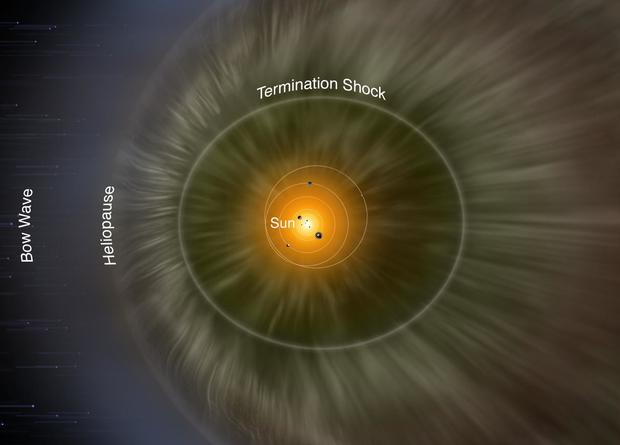Two apparatuses of the Voyager program determined the plasma pressure and the speed of sound in the heliospheric mantle, where the solar wind gradually slows down and interacts with the interstellar medium. And the shock wave created by solar activity that passed through the entire solar system helped them do this.
Two probes of the Voyager program were launched in the late 1970s and were intended to study giant planets of the solar system, and later went to its outskirts. Despite the fact that the initial life of the probes was estimated at five years, they have been working for 42 years. Now Voyager 2 is located at a distance of almost 122 astronomical units from the Earth. Voyager 1, the distance to which is 147.5 astronomical units, is considered the most man-made object from Earth. Both devices have already entered the interstellar space.
The devices are now studying the heliospheric mantle – the area located between the boundary of the shock wave, where the speed of the solar wind drops from supersonic to sonic, and the boundary of the heliosphere, known as the heliopause, where the solar wind is finally decelerated. In the heliospheric mantle, the movement of the solar wind flow acquires a turbulent character, and it begins to interact with the interstellar medium, more and more slowing down. Scientists are interested in the parameters of this medium, since it is necessary to build the correct models for the interaction of stars with the interstellar medium.
In 2012, Voyager 2 recorded a temporary decrease in the concentration of particles of galactic cosmic rays, which was associated with the arrival of a plasma wave, the source of which was powerful solar activity. Four months later, the Voyager-1 instruments registered the same event, which allowed scientists who knew the position and trajectory of the apparatuses to estimate the plasma pressure in the heliospheric mantle and determine the speed of sound propagation in it.
It turned out that the plasma pressure in this region is greater than previously assumed. A sound wave propagates in the mantle at a speed of about three hundred kilometers per second, which is a thousand times faster than in air. At the same time, the obtained data on the concentration of particles of galactic cosmic rays differed from each other – Voyager-2 detected a decrease in the number of charged particles in the entire area near itself, and Voyager-1 recorded only a decrease in the number of particles that moved perpendicular to the local magnetic field. This means that the parameters of the medium in front and behind the shock wave are different.
Via | Nasa
